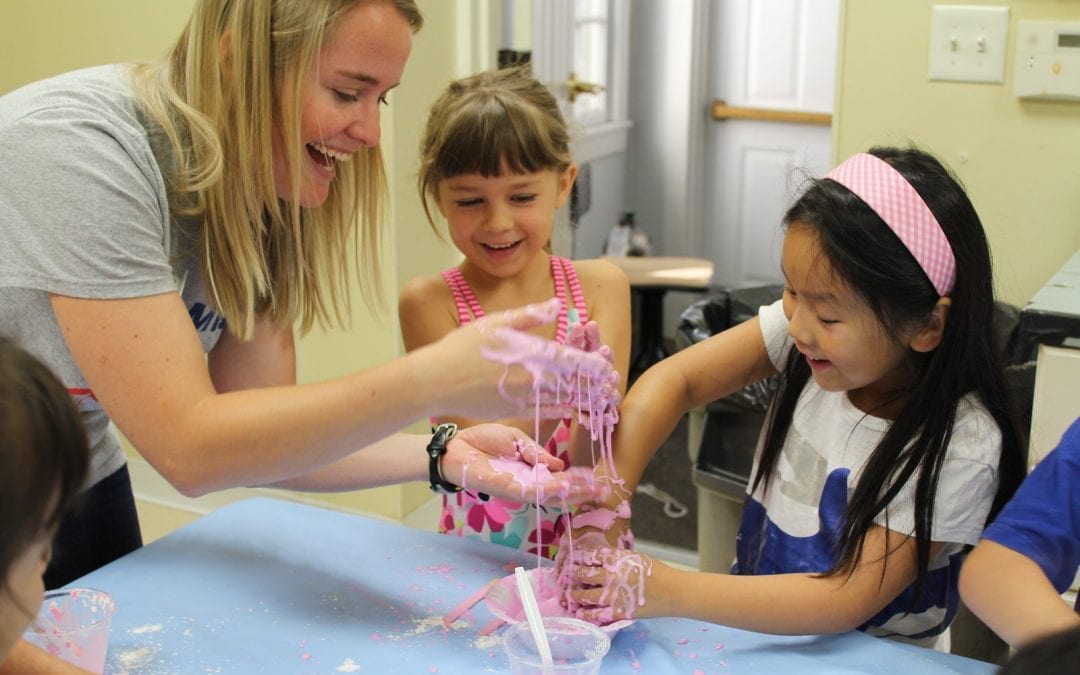By Amanda Cooper ’18
Student Intern, Marketing and Communications Department
The Moorestown Friends Summer Scholars Program offers students the opportunity to participate in a variety of courses and different learning opportunities. These include science, art, mathematics, technology, and more! The Summer Scholars Program is open to children from prekindergarten through high school. The courses all make learning fun!
One example is a delicious course that explores the science and chemistry behind the cooking and baking of much beloved snacks and foods. In the Kitchen Chemistry course, children in grades 1-3 hypothesize, question, observe, and draw conclusions about how and why various ingredients in different recipes undergo changes under different circumstances. The students complete a variety of activities from using Alka-Seltzer to extract different colors from a black-colored Skittle, to learning about the chemistry behind making homemade ice cream.
One of the students’ favorite activities is creating slime, or “Oobleck.” This experiment shows the children how different solids and liquids change forms. Gathering around a table in the kitchen of the MFS Greenleaf Building, the students pair up and use a bowl, 1 cup of water, 1/2 – 2 cups of cornstarch, food coloring, and popsicle sticks. Pouring the water into the bowl and adding a few drops of food coloring, the students add the cornstarch a little at a time and stir it together with the popsicle sticks until the Oobleck has a gooey consistency. Once everything is mixed together, the kids are given free reign to play with their Oobleck. The students jab at the Oobleck, some roll it into a ball then relax their hands, and some squeeze it and then let it ooze through their fingers. After the experiment, all of the students observed that even though the Oobleck had a liquid consistency, it acted like a solid when squeezed or put under pressure.
The second experiment in which the students observe the changing of states of matter is the creation of their own homemade ice cream. In one large group, the students are provided with 1 cup of milk, 1 cup of heavy cream, 1/4 cup sugar, 1 tablespoon vanilla, a quart-sized plastic freezer bag, a gallon-sized plastic freezer bag, 1 cup of ice cream salt, ice, dish towels, and bowls. Going around the table, the kids put the milk, heavy cream, sugar, and vanilla in a bowl, pouring half the mixture into a quart-sized bag. Then, placing the double-bagged mixture into a gallon-sized bag, the students fill the large bag with ice after pouring a 1/2 cup of salt over the ice and zip the bag shut. Next, carefully wrapping a dishtowel around the bag of ice and placing it in a second gallon bag, they zip the bag shut. The most fun part of making the ice cream is turning the liquid into solids. The class goes outside for 10-15 minutes and turns the liquid ingredients to solid by tossing, hitting, and playing with the bag of ingredients. The smiles on the students’ faces and laughter clearly show that this was their favorite part of the process. After coming back inside and opening the bags which once contained liquids, they see ice cream! After eating their ice cream (with sprinkles of course), the students learn how the liquid in the bags changed to a solid.
After a fun-filled week of enjoying the scrumptious side of science, the students are now armed with knowledge of the chemistry behind the cooking process and with confidence in their cooking skills.

